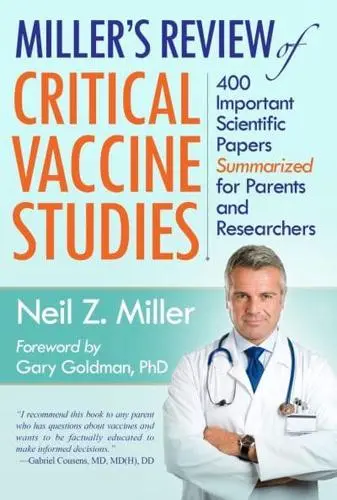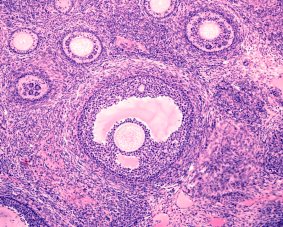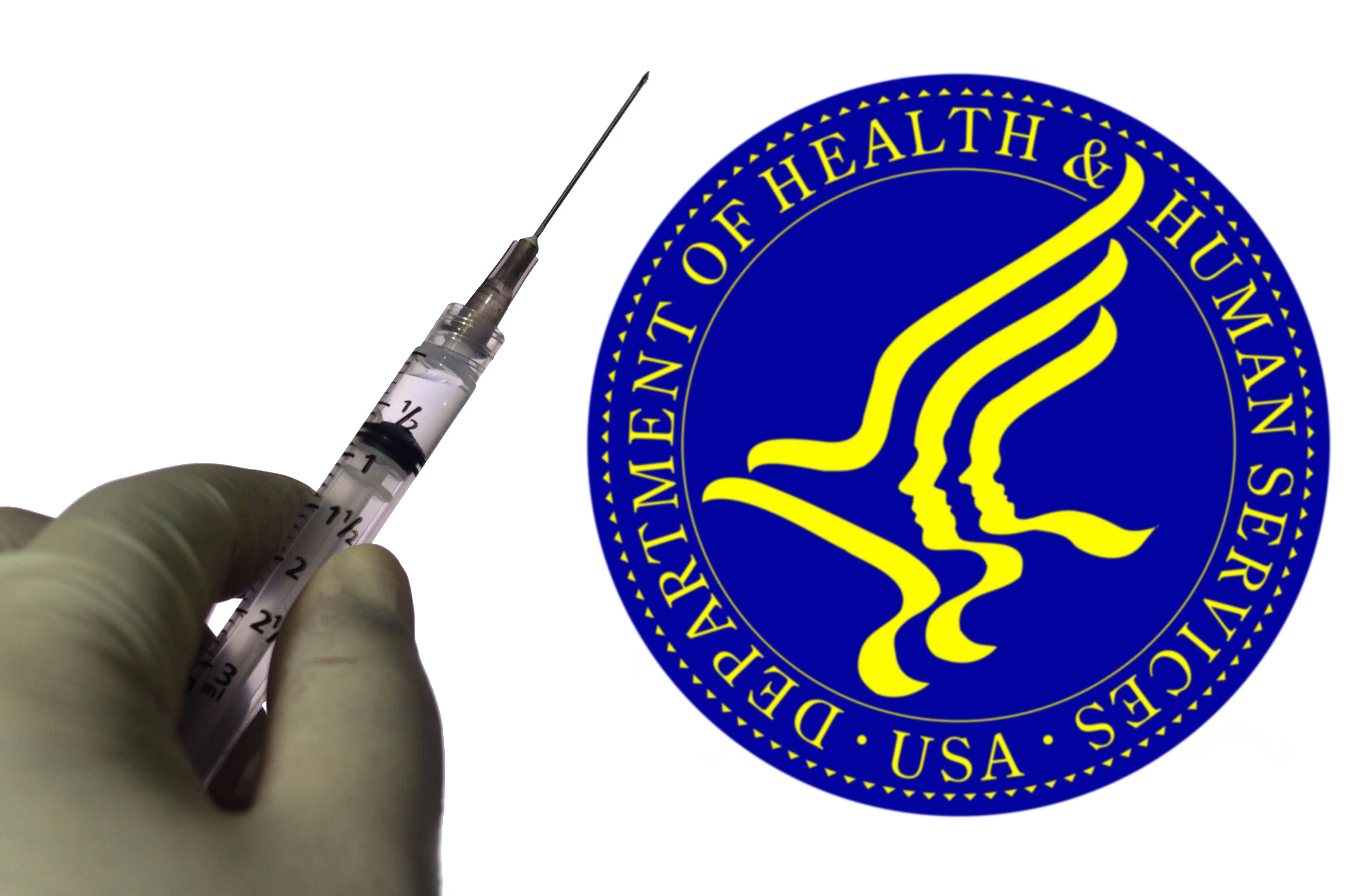 President Trump assigned Robert F. Kennedy Jr. to be the 26th Secretary of the U.S. Department of Health and Human Services, giving Kennedy broad powers to influence and even control many aspects of the health services and direction of the health of the nation. And, ever since he was sworn in on February 13, 2025,
President Trump assigned Robert F. Kennedy Jr. to be the 26th Secretary of the U.S. Department of Health and Human Services, giving Kennedy broad powers to influence and even control many aspects of the health services and direction of the health of the nation. And, ever since he was sworn in on February 13, 2025,
I am somewhat reluctant to write anything about this since I generally try to avoid discussing politics, especially within a religious context. However, the resulting confusion and misinformation regarding health and medical care leads me to respond since it directly affects the lives and well-being of a great many people.
Table of Contents
The Good:
There are a number of good things that RFK Jr. believes and promotes. I believe that he is sincere in his desire to improve the health of the country, particularly children. So, I do believe that his motives are good. He has also urged a number of good points of health.
Sugar Consumption:
 RFK Jr. has argued that “sugar is poison” and urged Americans to eliminate added sugar from their diets entirely. He argues that excess sugar consumption is linked to serious health risks like obesity, type 2 diabetes, heart disease, and tooth decay. His proposed actions to reduce sugar consumption include:
RFK Jr. has argued that “sugar is poison” and urged Americans to eliminate added sugar from their diets entirely. He argues that excess sugar consumption is linked to serious health risks like obesity, type 2 diabetes, heart disease, and tooth decay. His proposed actions to reduce sugar consumption include:
- Stronger labeling laws and new federal dietary guidelines recommending people avoid added sugar completely.
- Encouraging states to align nutrition programs with evidence-based dietary guidelines.
- Efforts to restrict sugar in food assistance programs like SNAP, including preventing the use of SNAP benefits to purchase sugary drinks. (Link)
Now, regardless of the effectiveness of his efforts to enforce his ideas here on the masses, the basic idea that Americans consume to much refined sugar, and that this has led to numerous health problems, is true.
Vitamin D:
 RFK Jr. has also promoted vitamin D (alongside vitamins A, C, B12, and E) as part of a healthy, well-balanced diet to promote health and a strong immune system. Certainly, it is true that vitamin D deficiency is a serious problem, even in the United States. Vitamin D deficiency is a widespread issue in the United States, affecting a significant portion of the population. Studies indicate that nearly 42% of adults in the US have a vitamin D deficiency. The overall prevalence rate of vitamin D deficiency was 41.6%, with the highest rate seen in blacks (82.1%), followed by Hispanics (69.2%). (Link)
RFK Jr. has also promoted vitamin D (alongside vitamins A, C, B12, and E) as part of a healthy, well-balanced diet to promote health and a strong immune system. Certainly, it is true that vitamin D deficiency is a serious problem, even in the United States. Vitamin D deficiency is a widespread issue in the United States, affecting a significant portion of the population. Studies indicate that nearly 42% of adults in the US have a vitamin D deficiency. The overall prevalence rate of vitamin D deficiency was 41.6%, with the highest rate seen in blacks (82.1%), followed by Hispanics (69.2%). (Link)
This is a real problem because vitamin D isn’t really a vitamin. It’s a hormone that regulates many bodily functions, to include the human immune system (Link). Vitamin D also helps to restore and maintain the calcium in our bones, where 99% of it resides. Without sufficient vitamin D, bones can become weak and fragile. Some studies show a possible connection between vitamin D and protection against cancer, heart disease, bacterial and viral infections, COVID, and more. So, clearly, it’s important to have enough, but not too much, since vitamin D, along with vitamins A, E, and K, are fat soluble, meaning that one can actually overdose on these vitamins.
Here’s an interesting video by well-known pulmonologist Dr. Roger Seheult, who discusses the amazing benefits of sunlight in fighting disease, to include the benefits of infrared light as well as vitamin D:
Heavy Metals:
 RFK Jr. also sees heavy metals in foods as a problem. He has openly discussed his personal experience with mercury poisoning, which he attributed to fish consumption, and the chelation therapy he underwent as a result. (Link) It is true that fish, like tuna and salmon, for instance, contain high levels of mercury to the point that regular consumption should be avoided. What is also surprising is that common foods, like rice for example, also commonly contain high levels of heavy metals like arsenic, cadmium, and mercury. Arsenic was found in 100% of rice samples tested from stores in 20 metro areas and exceeded 100 parts per billion in 1 in 4. The U.S. Food and Drug Administration’s (FDA) arsenic limit for infant rice cereal, which is 100 parts per billion (ppb). Arsenic showed up at the highest levels, followed by cadmium. Lead and mercury were found in smaller amounts. (Link)
RFK Jr. also sees heavy metals in foods as a problem. He has openly discussed his personal experience with mercury poisoning, which he attributed to fish consumption, and the chelation therapy he underwent as a result. (Link) It is true that fish, like tuna and salmon, for instance, contain high levels of mercury to the point that regular consumption should be avoided. What is also surprising is that common foods, like rice for example, also commonly contain high levels of heavy metals like arsenic, cadmium, and mercury. Arsenic was found in 100% of rice samples tested from stores in 20 metro areas and exceeded 100 parts per billion in 1 in 4. The U.S. Food and Drug Administration’s (FDA) arsenic limit for infant rice cereal, which is 100 parts per billion (ppb). Arsenic showed up at the highest levels, followed by cadmium. Lead and mercury were found in smaller amounts. (Link)
SDA Vaccine Statements:
 As an aside, a motion to review the Vaccine Statements of the Seventh-day Adventist Church (April 15, 2015 & October 25, 2021) was forwarded at the current General Conference session, twice, and was decidedly voted down each time, effectively endorsing these Statements – which a revision of the 2015 statement that evidently was listed on the Church’s official website with a minor difference in wording compared to the actual Statement voted by ADCOM. (Link)
As an aside, a motion to review the Vaccine Statements of the Seventh-day Adventist Church (April 15, 2015 & October 25, 2021) was forwarded at the current General Conference session, twice, and was decidedly voted down each time, effectively endorsing these Statements – which a revision of the 2015 statement that evidently was listed on the Church’s official website with a minor difference in wording compared to the actual Statement voted by ADCOM. (Link)
The Bad:
The problem, of course, is that RFK Jr. doesn’t just promote good health and medical advice. He also promotes bad and misleading medical advice, and makes general health policies along these lines as well.
Vaccines:
His main problem here is that he has long been opposed to vaccines – particularly for children. He has long accepted the sensational arguments and conspiracy theories of anti-vaccine advocates. And, as he gained positions of political influence and power, these ideas have resulted in a great deal of harm, which is only bound to get worse given his new appointment as Health Secretary. Diseases that were long considered nearly eradicated in this country have a good chance of making a comeback, given the ideas and proposed policies of RFK Jr. The main source of confusion, which is very common, is a failure to recognize the difference between correlation and causation.
Measles Outbreaks:
 The efforts of RFK Jr. in Samoa to talk families out of taking the measles vaccines contributed to a deadly outbreak that ended up with the deaths of more than 80 people, many of whom were young children. (Link) This same thinking is currently affecting the United States during our own measles outbreak. In the first seven months of 2025, confirmed measles cases have reached 1,288 — marking the most infections since 1992. (Link) Two children have died, so far, and 162 people have been hospitalized. However, instead of promoting the MMR vaccine, due to his fear of it, RFK Jr. has promoted healthful living and vitamin A instead.
The efforts of RFK Jr. in Samoa to talk families out of taking the measles vaccines contributed to a deadly outbreak that ended up with the deaths of more than 80 people, many of whom were young children. (Link) This same thinking is currently affecting the United States during our own measles outbreak. In the first seven months of 2025, confirmed measles cases have reached 1,288 — marking the most infections since 1992. (Link) Two children have died, so far, and 162 people have been hospitalized. However, instead of promoting the MMR vaccine, due to his fear of it, RFK Jr. has promoted healthful living and vitamin A instead.
Where did RFK Jr. get this idea that vitamin A could effectively deal with a measles outbreak? Well, he got this idea from studies down in areas of vitamin A deficiency where the supplementation of vitamin A reduced the morbidity and mortality of measles (Link). The problem, of course, is that the population of the United States is not vitamin A deficient. Giving vitamin A to those who already have adequate levels of vitamin A in their bodies does not provide additional benefits. The positive studies in a 2005 Cochrane review were all done in Africa. The two non-African studies in Japan and England did not show a benefit. A 2021 study in Italy also showed no mortality reduction when children with measles were given vitamin A. In resource-rich countries, where vitamin A deficiency is rare, vitamin supplementation doesn’t seem to do anything. (Link) Again, fat-soluble vitamins like vitamin A, D, E and K will remain in the system and can build up to toxic levels. Multiple children in Covenant Children’s Hospital in Texas experienced liver toxicity after they reportedly used vitamin A to treat their measles symptoms.
Vaccines and Autism:
 RFK Jr. has long believed in and has revived the long heavily studied and discredited theory that vaccines are tied to autism in children. This whole notion started with Andrew Wakefield, who wrote a paper, now known to be fraudulent, which was published in The Lancet in 1998. In this paper, Wakefield claimed that childhood autism spectrum disorder was related to the MMR vaccine. He deliberately falsified data in this paper (Link, Link), and the paper was eventually retracted. Of course, we now have abundant evidence that vaccines do not increase the risk of autism. (Link)
RFK Jr. has long believed in and has revived the long heavily studied and discredited theory that vaccines are tied to autism in children. This whole notion started with Andrew Wakefield, who wrote a paper, now known to be fraudulent, which was published in The Lancet in 1998. In this paper, Wakefield claimed that childhood autism spectrum disorder was related to the MMR vaccine. He deliberately falsified data in this paper (Link, Link), and the paper was eventually retracted. Of course, we now have abundant evidence that vaccines do not increase the risk of autism. (Link)
If not vaccines, are there any known risks that do increase the risk of autism spectrum disorder (ASD)? For a while, it was thought that maternal health issues were likely associated with ASD. However, recent studies have called this into question as well, suggesting that many maternal health issues might not be causally associated with an increased risk of ASD. (Link)
Lee and others caution against interpreting the paper as meaning that autism isn’t affected at all by maternal health, or that it’s entirely genetically determined. The analyses used in the paper are a “blunt instrument” that can’t get at the mechanisms underlying autism, he adds. (Link)
So, this issue remains a complex one, but not one associated with childhood vaccines.
Amish Children Don’t Have Autism:
 The Amish did not fare better than anyone else within a given age category during the pandemic, and their unvaccinated children are no healthier than vaccinated children. (Link)
The Amish did not fare better than anyone else within a given age category during the pandemic, and their unvaccinated children are no healthier than vaccinated children. (Link)Aborted Fetal Tissue in Vaccines:
 RFK Jr. has also forwarded the idea that the MMR vaccine contain aborted fetal tissue. Here’s what’s really going on:
RFK Jr. has also forwarded the idea that the MMR vaccine contain aborted fetal tissue. Here’s what’s really going on:
To develop certain vaccines, viruses are grown in human cell lines to weaken them so they can trigger an immune response without causing illness. Ratner said researchers discovered decades ago that fetal cells can support the growth of some viruses in ways other cells cannot. Fetal cells, unlike animal cells, are not contaminated with other viruses…
After the virus is grown, the cells are broken open and filtered to remove any cellular material, leaving only the virus, Amy Edwards, MD, a pediatric infectious disease specialist in Cleveland and vice president of the Infectious Diseases Society of Ohio, told MedPage Today. While trace amounts of DNA may remain, the fragments are so tiny and degraded that they pose no risk.
Kennedy and others have suggested that these fragments could integrate into a person’s DNA and cause damage, but scientists say that is biologically implausible.
“Life on earth is nucleic acid-based, so every time you eat or drink something, you’re awash in cell-free DNA. It’s everywhere,” Edwards said. “If cell-free DNA were dangerous, we would all be dead.” (Link)
The Use of Mercury in Vaccines:
 As far as mercury in childhood vaccines is concerned, again, thimerosal was taken out of childhood vaccines in the United States in 2001. (Link)
As far as mercury in childhood vaccines is concerned, again, thimerosal was taken out of childhood vaccines in the United States in 2001. (Link)
.
Consider also that the level of mercury that infants get from breastfeeding alone far exceeds the levels of mercury taken in from vaccines… yet without apparent toxic effect. I assume that you’re not opposed to breastfeeding? An infant who is exclusively breastfed will ingest and absorb more than 15 times the quantity of mercury that was contained in the influenza vaccine. This doesn’t even count the additional amounts of mercury, organic and inorganic, that the child will ingest and absorb from the water is fairly significant at 0.002 mg/L (not to mention the mercury levels in the other foods that the child consistently ingests). Compare this to the 0.025 mg that a child is injected with from a vaccine containing thimerosal (before thimerosal was removed from childhood vaccines). Now, it is recommended that a child drink between 1.5 and 2 liters of water per day. The level of mercury is ingested and absorbed, just from drinking water alone, would equal the amount within a flu shot within less than a week! – every week!
Currently, the recommended daily allowance of mercury that is thought to be non-toxic is 0.1 μg/kg/day. For a 10 kg child, that would be 1 μg/day. At this rate, it would take only 25 days to reach the level of mercury present within a thimerosal vaccine of 25 μg (roughly the same amount of elemental mercury contained in a 3-ounce can of tuna fish). This suggests that an infant or toddler child who is not vaccinated still takes in at least an amount of mercury equivalent to a dozen vaccines every year… yet without toxic effects? – especially considering that there is about 2 μg/L of mercury in water alone?
Sudden Infant Death Syndrome (SIDS):
 There is also the claim that the childhood vaccine schedule increases the risk of Sudden Infant Death Syndrome (SIDS). A paper was published in 2021 by Neil Z Miller suggesting an association between SIDS and vaccines based on his Analysis of the VAERS database 1990-2019. (Link) Note that the question of SIDS and vaccines has been around for a while. Another analysis of VAERS data looked at 1,244 deaths of children reported from 1997 to 2013, including 1,165 under age 1. There were 544 deaths attributed to SIDS where an autopsy report or death certificate was available, making it the most common cause of death. Among the children who died, those reports say, 79.4% received at least one vaccine on the same day. (Link) A common problem in interpreting these results is that correlation does not necessarily mean causation. This is a huge issue in medical science. Separating correlation from causation is often difficult, and even otherwise intelligent people often get confused here.
There is also the claim that the childhood vaccine schedule increases the risk of Sudden Infant Death Syndrome (SIDS). A paper was published in 2021 by Neil Z Miller suggesting an association between SIDS and vaccines based on his Analysis of the VAERS database 1990-2019. (Link) Note that the question of SIDS and vaccines has been around for a while. Another analysis of VAERS data looked at 1,244 deaths of children reported from 1997 to 2013, including 1,165 under age 1. There were 544 deaths attributed to SIDS where an autopsy report or death certificate was available, making it the most common cause of death. Among the children who died, those reports say, 79.4% received at least one vaccine on the same day. (Link) A common problem in interpreting these results is that correlation does not necessarily mean causation. This is a huge issue in medical science. Separating correlation from causation is often difficult, and even otherwise intelligent people often get confused here.
The problem is that Miller, who is also a well-known opponent of vaccines in general (Link), misunderstands of the purpose and nature of the VAERS database (which is a very common problem, particularly among those opposed to vaccines). The VAERS database, maintained by the FDA and CDC, is not able to establish causation. VAERS data, on their own, cannot be used to establish whether an adverse event such as death is caused by a vaccine. Infant deaths reported to VAERS have decreased since the 1990s, when the federal government and other groups launched “Back to Sleep,” a national campaign to educate caregivers and parents about reducing the risk of SIDS. In order to establish causation, research studies would be required to demonstrate a statistically significant increased rate of SIDS among vaccinated as compared to unvaccinated infants. And, multiple research studies have concluded that no concerning patterns exist among VAERS-reported deaths that would point to vaccines as a cause. Numerous other large-scale studies and research reviews, conducted over many years, have also confirmed that vaccines do not cause SIDS. In fact, these studies have shown that not only do vaccines not cause SIDS, but they may also decrease the risk by 50%. (Link)
Too Many Vaccines:
The claim that children are given “too many vaccines” is based on a misunderstanding of how the human immune system works. The human immune system is exposed to novel foreign antigens every day, especially babies who crawl around on the ground and put everything in their mouths. In fact, keeping babies and children too clean isn’t good because this reduces antigen exposure that is necessary to properly develop the immune system to recognize a host of foreign antigens. Exposure to a little dirt is a good thing, not a bad thing. The immune systems of children and babies can handle hundreds and thousands of antigens. The few dozen vaccines given are a drop in the bucket in comparison to the antigen exposures that a child’s immune system experiences and should experience.
Consider also (as explained well in the video clip below), that the number of antigens in the childhood vaccine schedule has actually decreased significantly since the 1980s, not increased (thousands of antigens vs. 320 antigens today). And, again, this really doesn’t matter as far as the number of antigens that the immune system can handle.
Continued COVID-19 and mRNA Vaccine Misinformation:
Largest Autopsy Study:
 The “Largest Autopsy Study” was written by Peter McCullough and others who are also well-known for spreading false and misleading information on vaccines, claimed that:
The “Largest Autopsy Study” was written by Peter McCullough and others who are also well-known for spreading false and misleading information on vaccines, claimed that: In short, the autopsy reports come from 14 countries that collectively administered some 2.2 billion vaccine doses. If the COVID-19 vaccines truly were as dangerous as the review authors contend, this would be evident in other data sources — but it’s just not there. Vaccine safety surveillance systems and other studies from across the globe have found that serious side effects can occur, but they are relatively rare.
In short, the autopsy reports come from 14 countries that collectively administered some 2.2 billion vaccine doses. If the COVID-19 vaccines truly were as dangerous as the review authors contend, this would be evident in other data sources — but it’s just not there. Vaccine safety surveillance systems and other studies from across the globe have found that serious side effects can occur, but they are relatively rare.Vaccines Saved Millions of Lives During the Pandemic:
 Also, during the pandemic, hospitalization rates for those who were unvaccinated were much more likely to die compared to those who were vaccinated.” (Link)
Also, during the pandemic, hospitalization rates for those who were unvaccinated were much more likely to die compared to those who were vaccinated.” (Link)“During the emergence of the SARS-CoV-2 Delta variant (May to July 2021), compared with vaccinated people, the unvaccinated were 6.8 times more likely to be infected, 11.4 times more likely to be hospitalized, and 17.5 times more likely to die. Amid Delta predominance (July to December 2021), those figures were 6.2, 21.0, and 15.4, respectively. After the emergence of the Omicron variant (December 2021 to January 2022), the increased likelihoods for unvaccinated participants were 0.9, 7.1, and 11.3 for infection, hospitalization, and death, respectively.” (Link)
This was certainly true in Northern California, where I was the lab director for large regional hospitals that were being inundated by the very sick and the dying, the significant majority of whom were unvaccinated. The same was true in Southern California in the large ICU run by my brother-in-law, the pulmonologist Dr. Roger Seheult. In fact, the common saying at the time, that the pandemic had turned into a pandemic of the unvaccinated, was unfortunately true.
mRNA Vaccines and Female Infertility:
 This is on top of a study published in March of 2025 that showed, “that both mRNA and inactivated COVID-19 vaccines may detrimentally impact ovarian reserve in rats, primarily through accelerated follicular loss and alterations in apoptotic pathways during folliculogenesis.” (Link)
This is on top of a study published in March of 2025 that showed, “that both mRNA and inactivated COVID-19 vaccines may detrimentally impact ovarian reserve in rats, primarily through accelerated follicular loss and alterations in apoptotic pathways during folliculogenesis.” (Link)Another factor is that COVID-19 and the stress of the pandemic disrupted many people’s lives. Some may have put off having children due to job insecurity, health concerns, or loss of childcare. If vaccinated women were more likely to work in healthcare or education, they might have delayed pregnancy more than others, not because of the vaccine, but due to life circumstances.
The researchers themselves are careful to point out that their findings do not prove harm. They describe the results as “hypothesis-generating,” which means they raise questions for future research but do not provide solid answers.” (Link)
 The fact is that, while interesting, those citing the Czech and rat studies as evidence of reduced fertility for vaccinated human women are strongly countered by studies showing that vaccinated women do not suffer from any detectable ovarian damage.
The fact is that, while interesting, those citing the Czech and rat studies as evidence of reduced fertility for vaccinated human women are strongly countered by studies showing that vaccinated women do not suffer from any detectable ovarian damage.
- Anti-Müllerian Hormone (AMH): Studies have consistently found no significant difference in AMH levels before and after receiving mRNA COVID-19 vaccines. AMH is a key indicator of ovarian reserve, reflecting the number of remaining follicles.
- Antral Follicle Count (AFC): Research also indicates no significant change in AFC after COVID-19 vaccination, further supporting the conclusion that ovarian reserve is not negatively impacted. AFC measures the number of small follicles visible on ultrasound.
- Ovarian Response in IVF: Studies focusing on women undergoing in vitro fertilization (IVF) have found that mRNA vaccination does not negatively affect ovarian response to stimulation or oocyte quality. (Link, Link, Link, Link, Link, Link, Link)
Why might this be for human women? When female rats are so negatively effected? Well, its probably because so little of the mRNA from the vaccine make it to human ovaries. The majority of the mRNA does stay at the site of injection, followed by local lymph nodes and then the liver. Only minute amounts make it to the ovaries (<0.1%) and are not associated with detectable ovarian damage or increased miscarriage rates compared to the unvaccinated. (Link)
In several organs (brain, kidneys, heart, ovaries, and testes) this mRNA was not detectable even on day 2 after the immunization. At the injection site (muscle) and in lymph nodes, this mRNA was detectable up to 60 days after the immunization. (Link)
Children and Pregnant Women Blocked from mRNA Vaccines:
 Based on similar misinformation to that already described, RFK Jr. has removed access to mRNA vaccines against COVID-19 from women and children, claiming that healthy children don’t need to get vaccinated since it is very unlikely for children to die of COVID-19. In response, a lawsuit has been issued, as of July 7, 2025, by six leading medical organizations, including the American Public Health Association, the American Academy of Pediatrics, the Infectious Diseases Society of America, the American College of Physicians, the Society for Maternal-Fetal Medicine and the Massachusetts Public Health Alliance, along with an anonymous pregnant physician, against Robert F. Kennedy Jr., as the current Secretary of Health and Human Services (HHS) (Link, Link). This lawsuit alleges that Kennedy unlawfully removed COVID-19 vaccine recommendations for children and pregnant women and dismissed expert advisors from the CDC’s Advisory Committee on Immunization Practices (ACIP), replacing them with individuals who espouse anti-vaccine viewpoints.
Based on similar misinformation to that already described, RFK Jr. has removed access to mRNA vaccines against COVID-19 from women and children, claiming that healthy children don’t need to get vaccinated since it is very unlikely for children to die of COVID-19. In response, a lawsuit has been issued, as of July 7, 2025, by six leading medical organizations, including the American Public Health Association, the American Academy of Pediatrics, the Infectious Diseases Society of America, the American College of Physicians, the Society for Maternal-Fetal Medicine and the Massachusetts Public Health Alliance, along with an anonymous pregnant physician, against Robert F. Kennedy Jr., as the current Secretary of Health and Human Services (HHS) (Link, Link). This lawsuit alleges that Kennedy unlawfully removed COVID-19 vaccine recommendations for children and pregnant women and dismissed expert advisors from the CDC’s Advisory Committee on Immunization Practices (ACIP), replacing them with individuals who espouse anti-vaccine viewpoints.
____________
 Dr. Sean Pitman is a pathologist, with subspecialties in anatomic, clinical, and hematopathology, currently working in N. California.
Dr. Sean Pitman is a pathologist, with subspecialties in anatomic, clinical, and hematopathology, currently working in N. California.








